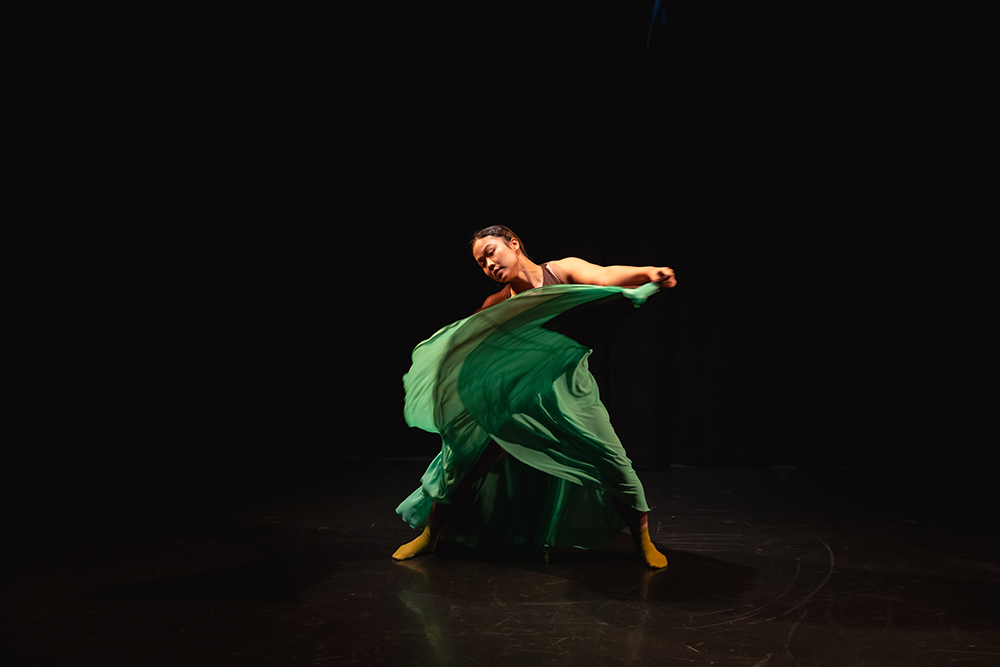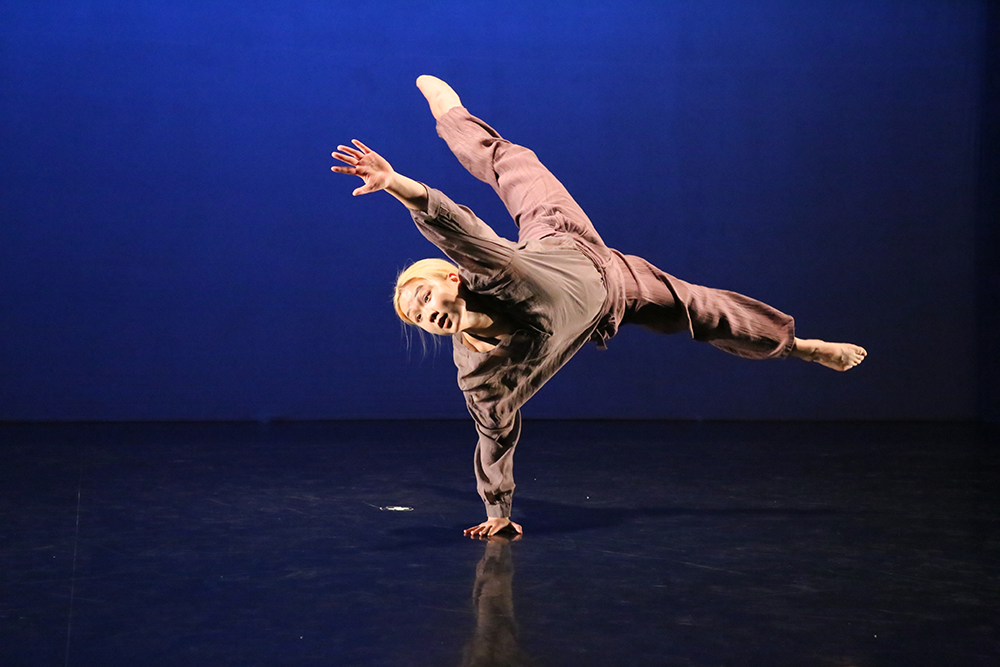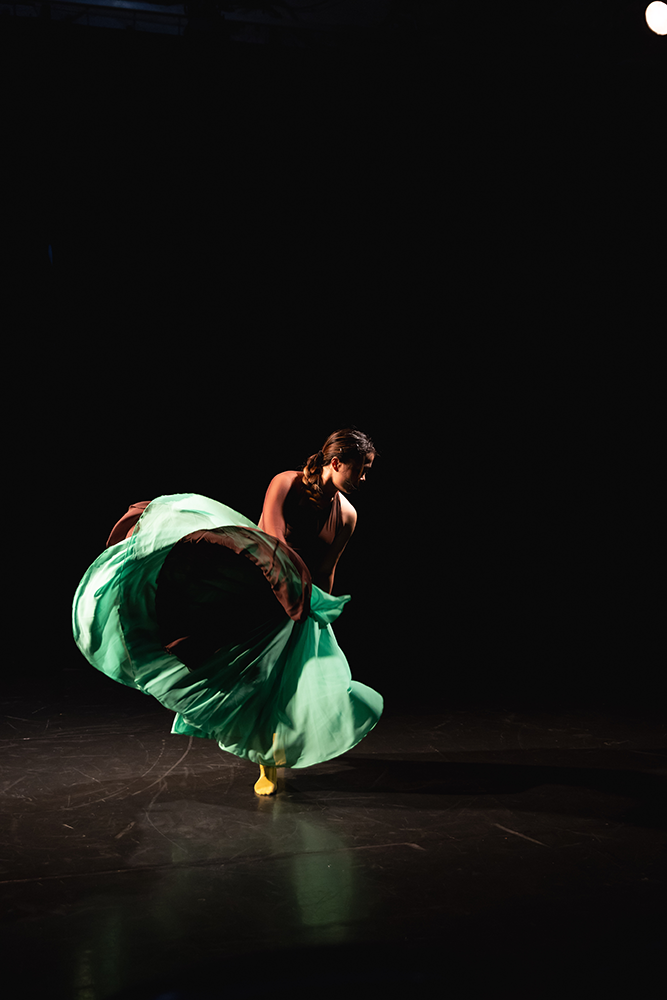Originally from China, Chengyao Zhou holds a bachelor’s degree in kinesiology-health management and an MFA in Contemporary Dance from Case Western Reserve University with full scholarship. Now based in Los Angeles, She continues to work as a professional dance educator and choreographer.
Born: China
Now: Temple City, United States
@chinyo_joo98 | website
INTERVIEW
Your dance journey began in Beijing and continued in the United States. How has this cultural journey influenced your choreography and perception of dance?
My choreographic perspective has been deeply shaped by my transnational journey, beginning in Beijing and continuing through my studies and practice in the United States. In China, my training was rooted in discipline, form, and technical clarity, emphasizing the value of tradition and collective expression. Upon moving to the U.S., I encountered a contrasting emphasis on individuality, experimentation, and interdisciplinary exploration.
This cultural shift not only expanded my movement vocabulary but also challenged me to reconsider the purpose and potential of dance. It encouraged me to explore dance as a site for identity formation, memory, and cultural negotiation. My work now often reflects this duality — it engages with the tension between structure and freedom, cultural heritage and personal voice. Through choreography, I aim to navigate and articulate the complexities of diasporic experience and embodied knowledge across cultural contexts.

In your works, you combine contemporary dance techniques with hip-hop, street styles, and improvisation. How do you find balance between these directions, and what inspires you to create such fusions?
My choreographic practice is grounded in the interplay between contemporary dance techniques, hip-hop foundations, street styles, and improvisation. Rather than viewing these forms as separate entities, I see them as distinct yet interconnected pathways to embodied knowledge, cultural memory, and personal expression. Although each style carries its own movement vocabulary, I believe they share underlying principles of motion and embodied philosophy. There is a universality in how the body engages with space, weight, rhythm, and emotion.
The balance in my work comes from honoring the essence of each form — its history, rhythm, and movement logic — while allowing them to intersect organically through my own body and lived experience. I am inspired to create these fusions out of a desire to bridge cultural and stylistic boundaries. Having moved between geographies and dance communities, I am drawn to hybridity not only as an aesthetic choice but also as a way of navigating identity. Improvisation, in particular, offers a space to explore both tension and harmony in real time, transforming movement into an ongoing dialogue between past influences and present realities.

As an educator, you strive for inclusivity in dance. What methods do you use to inspire students from diverse cultural backgrounds and help them express themselves through movement?
As an educator, I approach dance as both a physical practice and a cultural dialogue. I strive to create an inclusive environment where students from diverse backgrounds feel seen, heard, and empowered to express their unique identities through movement. One of the key methods I use is improvisation, which allows students to tap into their personal histories, emotions, and instincts without the pressure of conforming to a fixed aesthetic.
I also incorporate a range of movement languages — from contemporary and hip-hop foundations to elements drawn from street styles — to reflect the multiplicity of dance cultures and encourage students to find their own voices within that spectrum. Discussions on the historical and cultural contexts of different dance forms are also integral to my teaching, helping students understand not only how to move but why certain movements carry meaning.
Ultimately, my goal is to help students see dance as a tool for storytelling, self-exploration, and cultural exchange — a space where their individuality is not only accepted, but celebrated.

Chengyao, what advice would you give to emerging artists who are seeking their path in dance?
My advice to emerging artists is to stay deeply connected to why you dance. In a world full of noise and external expectations, your inner voice is your most valuable guide.
Take time to explore different styles, communities, and cultures—not just to expand your technique, but to understand how dance can carry personal and collective meaning.
Be patient with your growth, and don’t be afraid of uncertainty. Sometimes the most powerful work comes from moments of confusion, vulnerability, or transition. Trust that your unique background and lived experiences are a strength, not something to hide or overcome.
Also, take care of your body and spirit. Dance is demanding, and longevity comes from balance—between discipline and rest, ambition and self-compassion. Surround yourself with people who inspire and support you, and stay open to collaboration and learning.